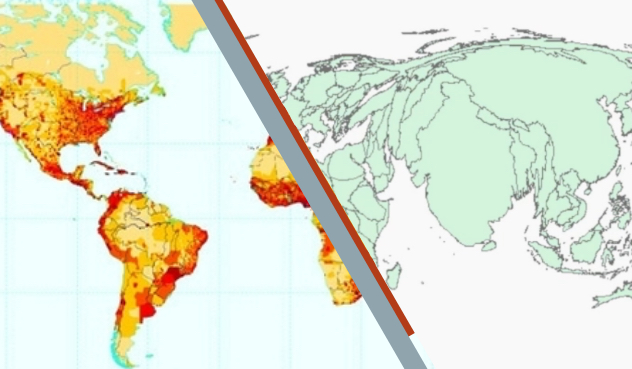THE PROBLEM

Cloropleth / Cartogram
We used to be constrained by static visuals
We have taken static geovisualizations (maps) as a given, but that is quickly changing – just think to the interactive maps we saw during the 2020 US Presidential Election. When it comes to displays of density, it seems like we're stuck in the twentieth century. Why not try something new? A static cartogram is a cool way to show variables such as population by making the area in a given region proportional to the number of people in that region. This can help us make sense of urban areas, which are difficult to dilineate with a hard line. However, cartograms can be tricky to interpret. A remedy for this is to show a map warping into a cartogram: the warping cartogram animation!

